Carter's Walk to the White House
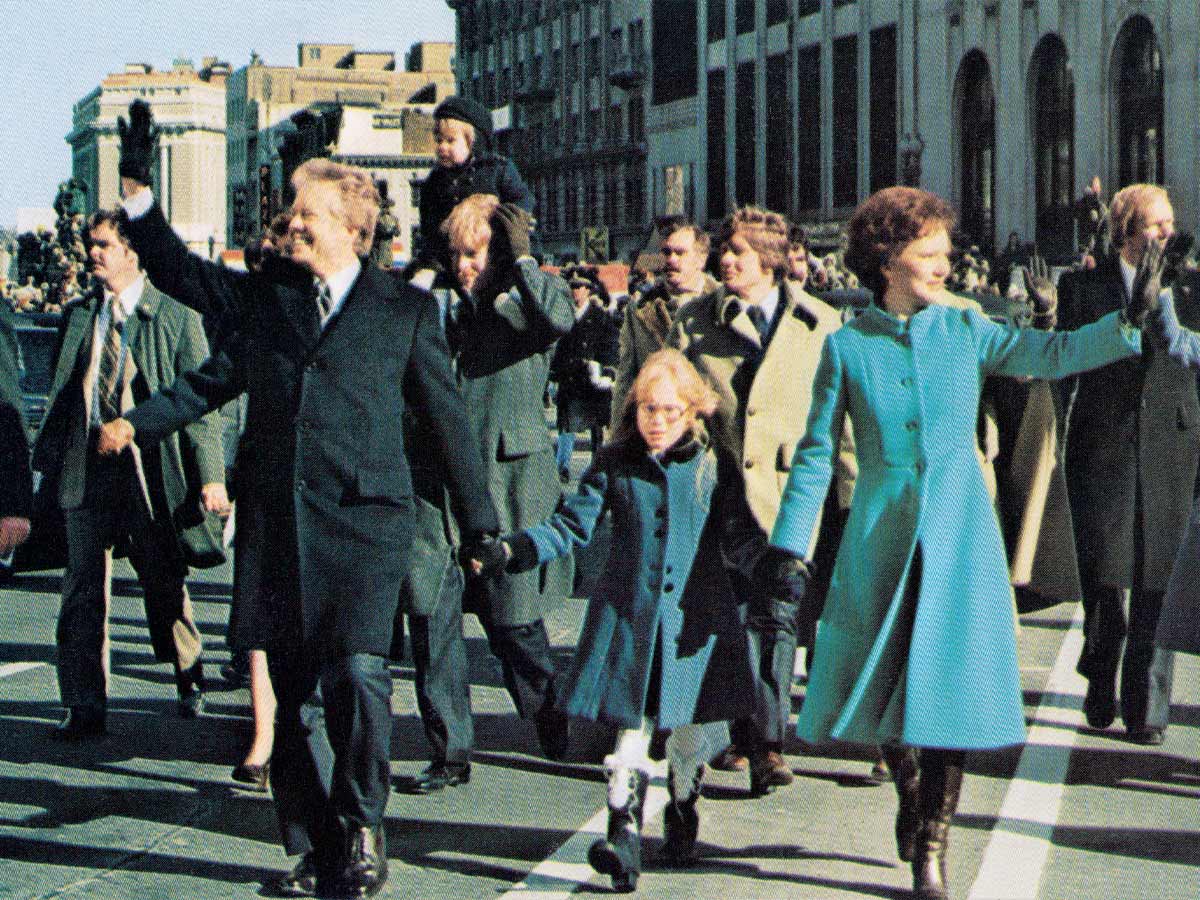
Jimmy Carter’s walk to the White House in 1977 broke from tradition and made history. Instead of riding in the presidential limousine, Carter and his wife, Rosalynn, walked down Pennsylvania Avenue after his swearing-in. This unprecedented move was a symbol of his commitment to the people, aiming to bridge the gap between the government and its citizens.
Surrounded by cheering crowds, Carter’s stroll conveyed a message of humility and accessibility. It was a bold, relatable gesture that set the tone for his presidency, reflecting his down-to-earth approach and desire for a more transparent, approachable leadership.
"Ask not what your country can do for you..."

John F. Kennedy's inauguration speech on January 20, 1961, is etched in history for its eloquence and enduring impact. Delivered with fervor and optimism, Kennedy's address called for a new era of civic responsibility and global cooperation. His famous line, "Ask not what your country can do for you—ask what you can do for your country," resonated deeply, inspiring a sense of patriotism and public service.
The speech also emphasized the United States' commitment to defend freedom worldwide, setting a visionary tone for his presidency. Kennedy’s words continue to inspire and challenge Americans to contribute to the greater good.
Our First Black President

Barack Obama's inauguration oath in 2009 marked a historic moment as he became the first African American president of the United States. The ceremony, however, included a memorable hiccup: Chief Justice John Roberts and Obama flubbed the wording of the oath. This minor stumble led to a second, private swearing-in the next day to ensure constitutional correctness.
Despite this glitch, the occasion was celebrated for its profound significance and Obama's message of hope and change. The mix-up did little to overshadow the jubilant spirit of the day, which symbolized a significant step forward in American history.
Swearing In Switcheroo

John Quincy Adams' swearing-in on March 4, 1825, was a notable departure from tradition. Instead of taking the oath on a Bible, Adams placed his hand on a book of law, symbolizing his belief in the rule of law over religious influence in government. The ceremony, held in the House Chamber, reflected Adams' scholarly and principled nature.
His inauguration marked the beginning of a presidency committed to modernization and national improvement, although his tenure would be fraught with political challenges. Adams' unconventional choice during his swearing-in underscored his commitment to a government guided by reason and legal principles.
Awkward Gift Exchange

During the 2017 presidential inauguration, an awkward moment occurred between Melania Trump and Michelle Obama. As the Trumps arrived at the White House, Melania presented Michelle with a gift in a Tiffany & Co. box.
Visible discomfort was apparent. Michelle, unsure where to place the gift as cameras flashed, grinned while appearing uncomfortable. It was a common case of good intentions gone awry, at the highest level.
"The only thing we have to fear..."

Franklin Delano Roosevelt's inauguration speech on March 4, 1933, was a beacon of hope amid the Great Depression. Addressing a nation mired in economic despair, Roosevelt delivered his famous line, "The only thing we have to fear is fear itself." His powerful oratory instilled confidence and called for collective action to overcome the crisis.
Roosevelt outlined his New Deal vision, promising bold and persistent experimentation to revive the economy and restore public faith in the government. His speech marked the beginning of a transformative era, reassuring Americans that better days lay ahead under his leadership.
FDR's Low-Key Ceremony

In 1945, the country was still in the throes of war, so FDR made the choice to forgo the inaugural parade and other festivities that typically come with this day. He was also suffering from heart failure at the time, so he decided on a simple ceremony and a five minute speech at the White House.
His words, though less buoyant than previous addresses, reaffirmed his commitment to guiding the nation through its most challenging times. This historic inauguration underscored both the gravity of the moment and Roosevelt’s enduring resolve to lead the United States toward victory and recovery.
Eisenhower Gets Lassoed

Dwight D. Eisenhower's inauguration on January 20, 1953, marked the beginning of a new era of leadership. The ceremony was a grand affair, with Eisenhower taking the oath on two Bibles, symbolizing his strong moral and religious convictions.
The ceremony was notably enlivened by a surprising moment: cowboy star Montie Montana lassoed the president while he rode in the inaugural parade. This light-hearted act delighted spectators and showcased Eisenhower's good-natured personality. Despite the serious global context, this playful incident added a memorable, human touch to the day's events, symbolizing Eisenhower's approachability and the optimistic spirit of post-war America.
Popular Vote Protests
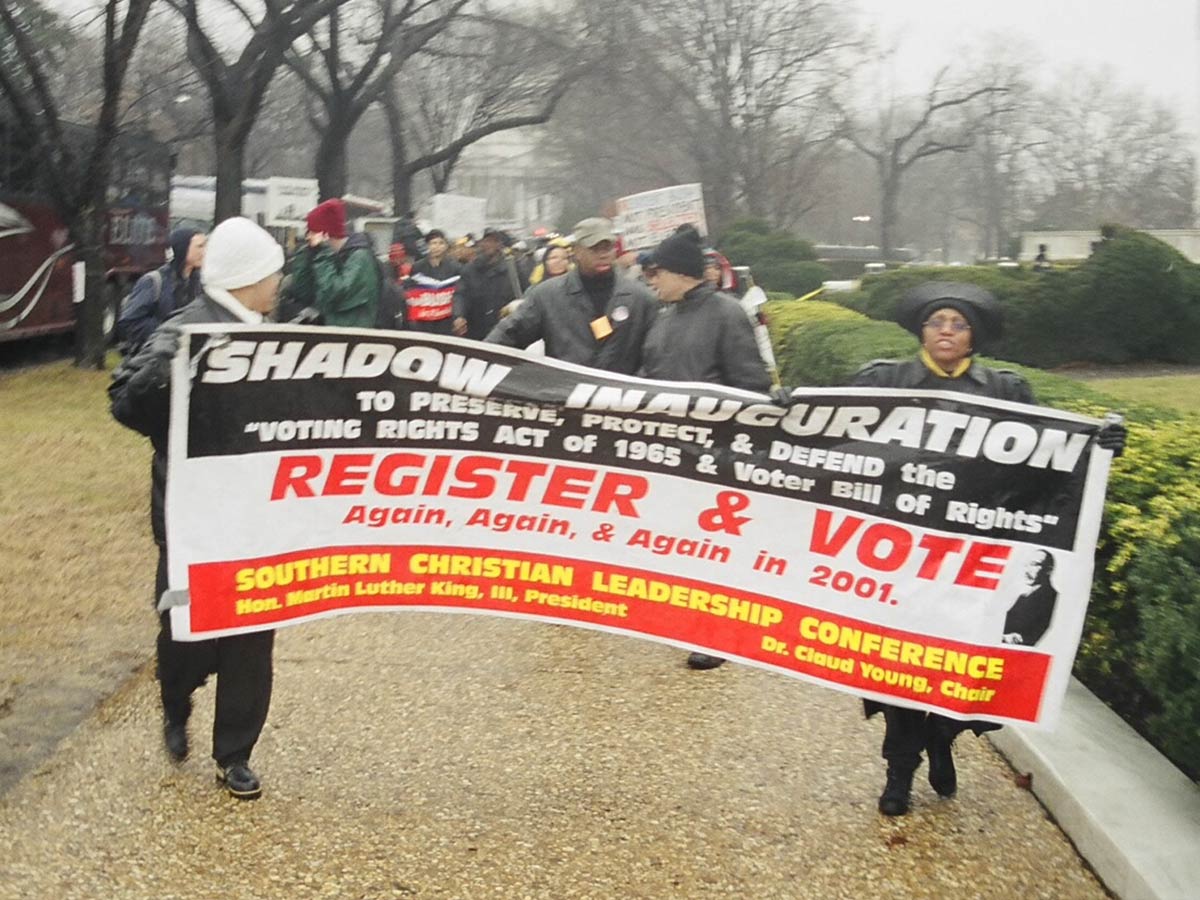
The inauguration of George W. Bush in 2001 was marred by protests due to the controversial outcome of the election. Despite losing the popular vote to Al Gore, Bush secured the presidency through the Electoral College. This contentious victory sparked demonstrations in Washington, D.C., where protesters voiced their discontent with the electoral process.
The scene outside the Capitol reflected a divided nation grappling with the legitimacy of Bush's presidency—hmm, sounds familiar. Amid heightened tensions, Bush's inauguration underscored the need for unity and healing in a deeply polarized political landscape.
Teddy Roosevelt's Parade

Teddy Roosevelt's inauguration parade in 1905 was a colorful spectacle, reflecting his dynamic personality and diverse interests. The parade featured a mix of military bands, cowboys, Native American delegations, and even a group of Rough Riders from his days in the Spanish-American War. Roosevelt's love for adventure and conservation was evident as well, with participants showcasing exotic animals and outdoor pursuits.
The eclectic parade captured the spirit of Roosevelt's presidency, characterized by his progressive policies, robust diplomacy, and zest for life. It remains one of the most memorable and diverse inaugural parades in American history.
Jackson's Crazy Inauguration Party

Andrew Jackson's 1829 inauguration party became infamous for its wild and chaotic nature. After his swearing-in, Jackson invited the public to the White House, resulting in an overwhelming turnout. The crowd quickly grew unruly, with partygoers trampling furniture, breaking china, and even standing on upholstery in their muddy boots.
The festivities spiraled out of control, leading Jackson to escape through a window for his own safety. Eventually, the crowd was lured outside with tubs of punch.
Lincoln's Call for Unity

Abraham Lincoln's inauguration speech in 1861 was a pivotal moment as tensions brewed between North and South. With the nation on the brink of civil war, Lincoln sought to reassure and unify a divided country. His address emphasized the importance of preserving the Union while respecting the rights of all states.
Despite his conciliatory tone, Lincoln made it clear that he would not compromise on the issue of slavery. The speech served as a call to action for Americans to uphold the principles of democracy and to strive for a more perfect union amidst the tumultuous times.
William Henry Harrison's Monumental Speech
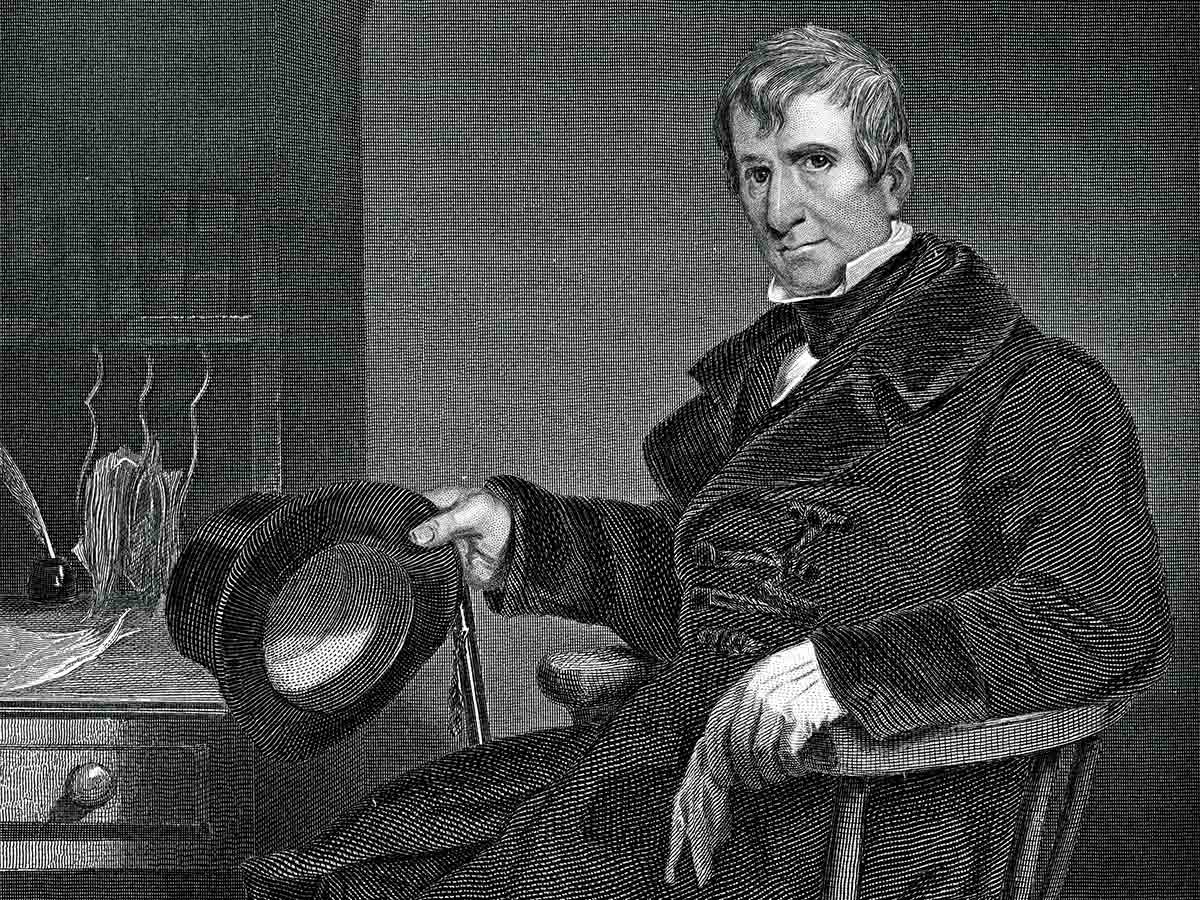
William Henry Harrison's inauguration speech in 1841 holds a tragic distinction as the longest in history, clocking in at nearly two hours. Given outdoors on a cold, rainy day, Harrison, eager to prove his stamina, spoke without wearing an overcoat or hat.
Unfortunately, this display of fortitude proved fatal, as Harrison developed pneumonia shortly afterward and died just 31 days into his presidency. His lengthy address, filled with lofty rhetoric about national unity and progress, ultimately became overshadowed by the brevity of his tenure.
Reagan's Optimism

In 1981, President Ronald Reagan lived up to his legacy as one of the most popular presidents in modern history by giving America a feeling of optimism again after the country felt it was on the decline. Reagan also made the day all the more spectacular by moving the ceremony to the West Front of the Capitol.
Reagan's message of hope and renewal resonated deeply with the American public. He famously declared, "Government is not the solution to our problem; government is the problem," expressing his belief in the power of individual initiative and limited government intervention.
George Washington's Precedent
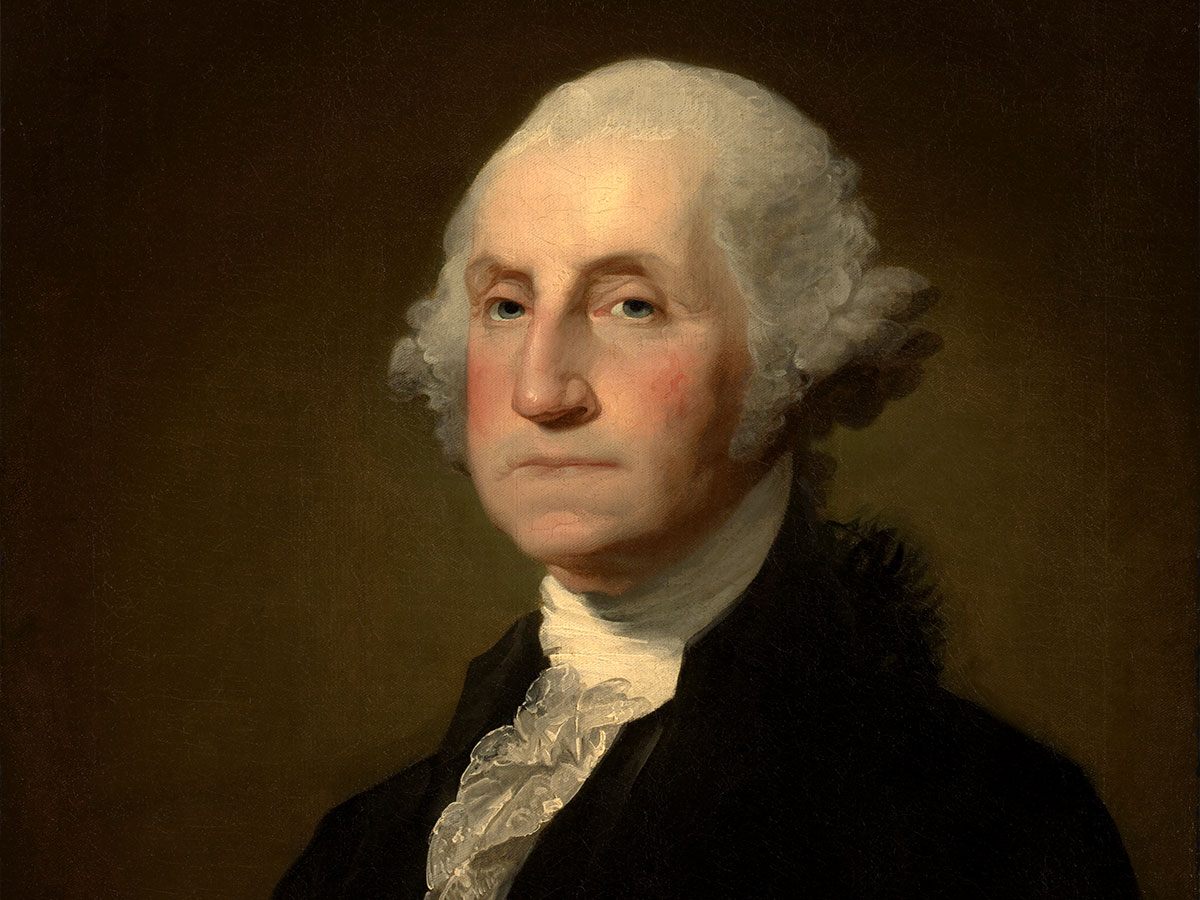
As the first president of the United States, George Washington had the ability to set many precedents. In 1789, he decided that he would not be called “Your Highness” as some suggested—instead he simply wanted to be called “Mr. President.”
This decision reflected Washington's commitment to republican principles and his desire to maintain a close connection with the people. By removing grandiose titles and symbols of monarchy, Washington established the tradition of a modest, servant-leader presidency, embodying the democratic ideals upon which the nation was founded.
The First Online Inauguration

President Bill Clinton’s second inauguration in 1997 made history because it was the first to be live-streamed on the internet. The Clintons also made headlines at this inauguration for attending a record-breaking 14 inaugural balls!
Clinton's reelection victory buoyed the spirits of his supporters, despite ongoing political controversies. His inaugural address struck themes of unity and progress, emphasizing the need for continued economic growth and social justice.
Trump's Fake Crowd Photos

In 2017, controversy swirled around Donald Trump's inauguration when edited and fake crowd photos circulated widely. Despite Trump's claims of record-breaking attendance, images comparing his inauguration crowd to that of Barack Obama's in 2009 revealed stark differences.
Some photos were digitally altered to exaggerate the size of the crowd, while others were misleadingly cropped. The discrepancies fueled debates about media bias and the new administration's integrity.
Poet at Joe Biden’s Inauguration
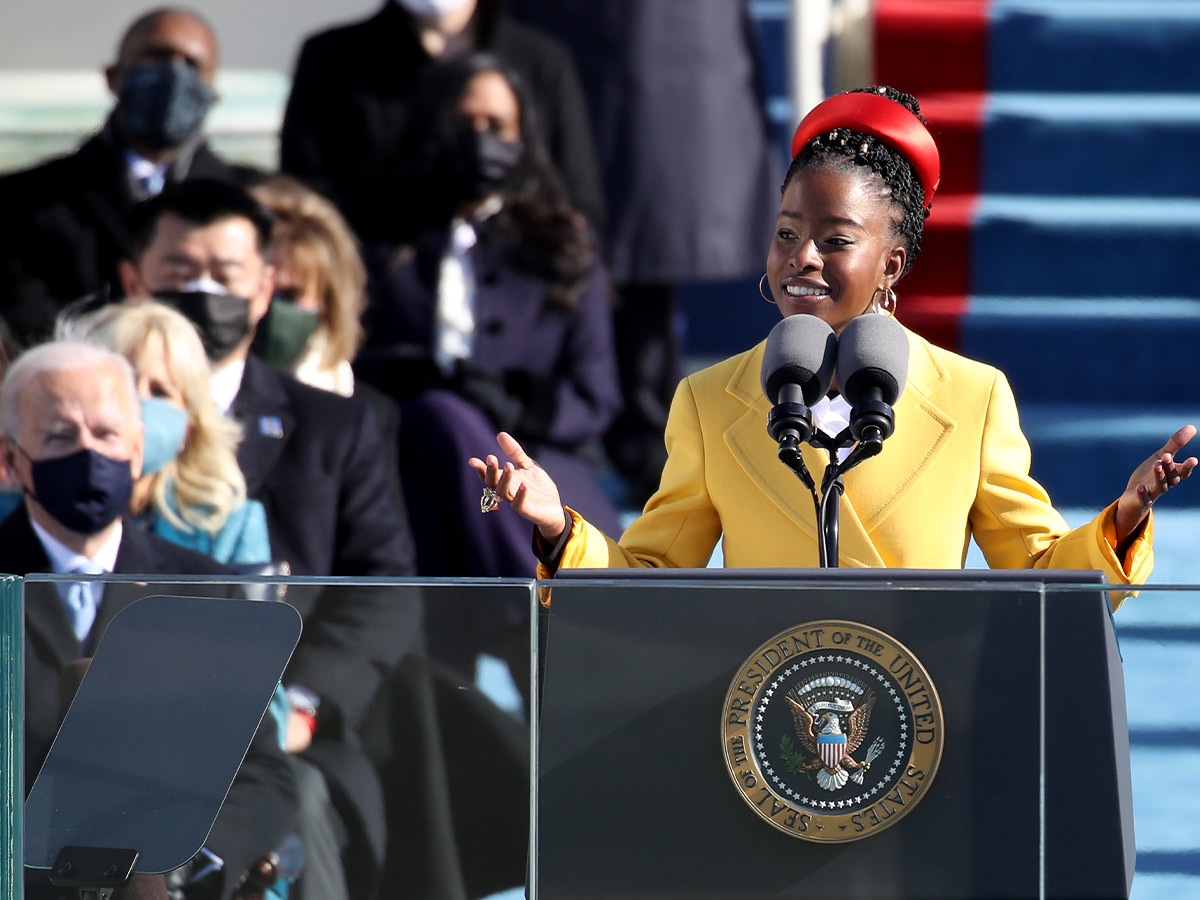
Amanda Gorman captivated the world as the inaugural poet at Joe Biden's Inauguration Day in 2021. At just 22, she became the youngest poet to perform at a presidential inauguration, delivering her original work, "The Hill We Climb."
Gorman's stirring words echoed themes of unity, resilience, and hope, capturing the spirit of a nation grappling with division and turmoil. Her powerful performance resonated deeply, inspiring millions with her eloquence and vision for a better future.
Bernie Sanders Cold Meme
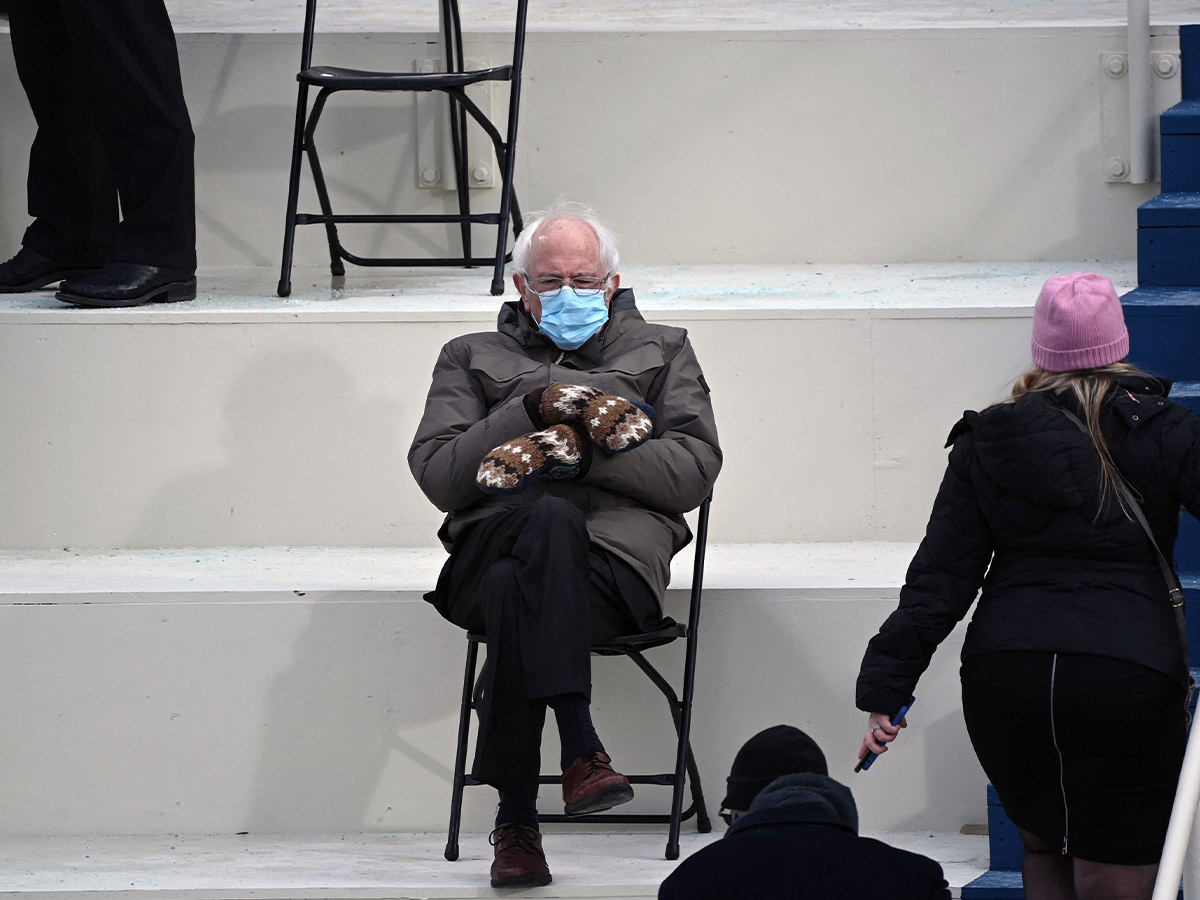
One of the most unexpected and lighthearted moments of Joe Biden's Inauguration Day in 2021 was the viral meme featuring Bernie Sanders. Clad in a practical winter coat and distinctive mittens, Senator Bernie Sanders sat cross-legged in the crowd, exuding practicality amidst the pomp and ceremony.
The image quickly became a social media sensation, with users humorously inserting Sanders into various scenes and situations around the world.
First Female Vice President

Kamala Harris made history on Inauguration Day 2021 as the first female Vice President of the United States. Sworn in by Justice Sonia Sotomayor, Harris shattered barriers as the highest-ranking woman in U.S. history.
Her inauguration marked a milestone for diversity and representation, inspiring women and people of color across the country. Harris, with her background as a senator and former attorney general, brought a message of unity and progress to the ceremony.
 Author
Courtney Holt
Last Updated: December 18, 2024
Author
Courtney Holt
Last Updated: December 18, 2024